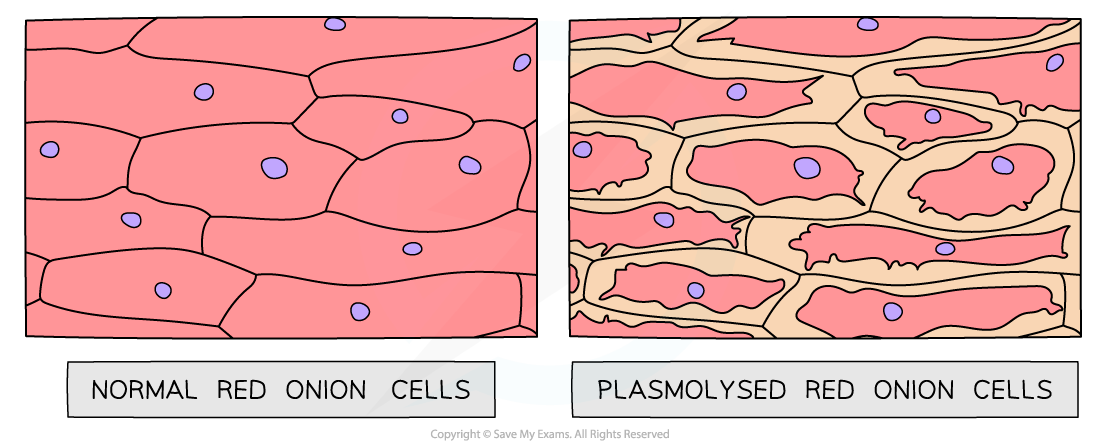- 翰林提供学术活动、国际课程、科研项目一站式留学背景提升服务!
- 400 888 0080
CIE A Level Biology复习笔记4.2.5 Investigating Transport Processes in Plants
Investigating Diffusion & Osmosis: Plant Tissue
Investigating diffusion
- The permeability of cell membranes can be affected by environmental factors such as chemicals or temperature
- This can be investigated using beetroot:
- Pieces of beetroot (obtained using a cork borer) are placed into water at different temperatures or into different alcohol concentrations
- Increases in cell membrane permeability result in the red pigment (normally contained within the large central vacuole) leaking out of the beetroot cells by diffusion
- Qualitative or quantitative measurements of the changes in the colour of the surrounding solution can be taken eg. using a colorimeter or a set of colour standards
- The red pigment leaks out via diffusion from regions of high concentration in the large central vacuoles of the beetroot cells to a region of low concentration in the solution outside the beetroot pieces
- Diffusion would not normally occur as it is prevented by the partially permeable nature of the plant cell membranesIn this case, however, high enough temperatures or alcohol concentrations can damage the cell membrane and disrupt its structure, allowing the pigment to diffuse out
Investigating osmosis
- Evidence of osmosis occurring in plant cells can be shown when plant cells undergo plasmolysis:
- If a plant cell is placed in a solution with a lower water potential than the plant cell (such as a concentrated sucrose solution), water will leave the plant cell through it partially permeable cell surface membrane by osmosis
- As water leaves the vacuole of the plant cell, the volume of the plant cell decreases
- The protoplast (living part of the cell inside the cell wall) gradually shrinks and no longer exerts pressure on the cell wall
- As the protoplast continues to shrink, it begins to pull away from the cell wall
- This process is known as plasmolysis – the plant cell is plasmolysed
- This process can be observed using epidermal strips (sections of the very thin outer layer of tissue in plants)
- Plants with coloured sap (such as red onion bulbs, rhubarb petioles and red cabbage) make observations easier
- The epidermal strips are placed in a range of molarities of sucrose solution or sodium chloride solutions
- The strips are then viewed under a light microscope
- Plasmolysis may take several minutes to occur

Light micrograph of normal red onion cells alongside those that have plasmolysed (artistic impression)
转载自savemyexams

早鸟钜惠!翰林2025暑期班课上线

最新发布
© 2025. All Rights Reserved. 沪ICP备2023009024号-1








